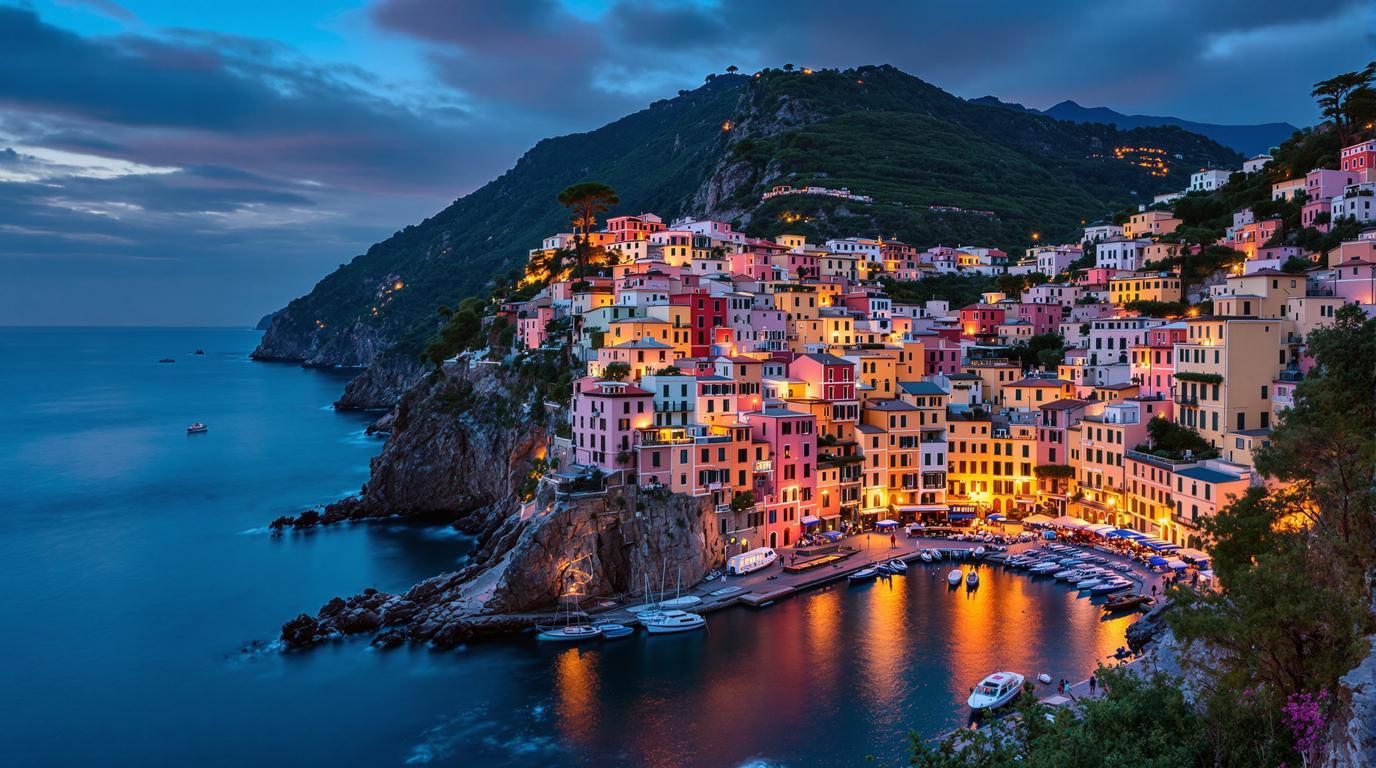The first time I encountered Manarola after dusk, the village seemed to hover like a constellation above the sea. Rainbow-hued houses clung impossibly to the cliff face, their reflections dancing across the inky Mediterranean as fishing boats bobbed gently below. This smallest gem of Italy’s Cinque Terre holds secrets that most day-trippers—rushing through their Instagram-driven itineraries—never discover. Beyond its postcard perfection lies a world of hidden terraces, century-old winemaking traditions, and an extraordinary dawn ritual that changed how I understand Italian coastal life.
Where ancient vineyards meet the Mediterranean’s embrace
Wedged between terraced hillsides and a rugged coastline, Manarola dates back to the 12th century when local families built defenses against Saracen pirates. What makes this village extraordinary isn’t just its precarious beauty but its remarkable viticultural heritage. Here, generations have cultivated vines on near-vertical slopes using techniques unchanged for eight centuries.
“Our grandparents built these stone walls by hand,” local winemaker Paolo Beretta told me, gesturing toward the intricate terracing that rises like a giant’s staircase above the village. “Each family’s plot tells a story—who married whom, which feuds divided land, which alliances united it. The wine remembers everything.”
Unlike its more trafficked sisters Vernazza and Monterosso, Manarola retains a working village rhythm that rewards those who linger past the day-trip hours.
Three treasures hidden beyond the tourist path
The fisherman’s dawn ritual at Marina Piccola
Arrive at the tiny harbor at 5:30 AM to witness something few tourists ever see. A handful of weathered boats slip into the cove where third-generation fisherman Enzo Carro and his companions gather to harvest the day’s catch using techniques passed down since medieval times. Unlike commercial operations elsewhere, these men still use traditional wooden gozzi boats and hand-cast nets.
“We only take what we need,” Enzo explained as he sorted iridescent anchovies into small wooden crates. “The sea gives, but you must respect her rhythm.” By 7 AM, they’ve returned to shore, distributing catches to local restaurants and families before tourists even begin their day.
Secret vineyard trail above Punta Bonfiglio
Behind the cemetery, a barely marked footpath winds through private vineyards producing Sciacchetrà, the region’s legendary sweet wine. Follow this trail around 6 PM when vineyard workers have departed and sunlight bathes the terraces in golden light. The path eventually reveals a secluded stone bench overlooking the entire village—a vantage point where I’ve spent hours watching fishing boats return as swallows perform aerial ballets overhead.
Look for the gate marked “Vigna di Lorenzo” halfway up. Though technically private, the elderly owner often invites respectful visitors to taste grapes during September harvest.
Where locals feast when tourists disappear
Trattoria dal Billy sits tucked into the upper village where few day-trippers venture. Here, matriarch Giovanna Capellini serves trofie pasta with walnut sauce and freshly caught scorpion fish so tender it dissolves against your palate. What makes this place special isn’t just the food—it’s how Giovanna preserves recipes that nearly vanished during the region’s economic decline in the 1950s.
“My grandmother cooked with whatever the land and sea provided that day,” she told me while drizzling local olive oil over my plate. “When tourists began arriving, many restaurants simplified their menus. I refused.”
Request the off-menu anchovies marinated in lemon and wild herbs—a preparation dating to when refrigeration was nonexistent and preservation techniques relied on nature’s antibacterial gifts.
Essential insights for experiencing authentic Manarola
Timing that transforms your experience
Visit in early May or late September when the coastal light reaches its most dramatic intensity but crowds thin considerably. Mondays and Tuesdays see fewer cruise ships docking in nearby La Spezia, making village pathways navigable. Arrive for at least one night—the village transforms after the 5:30 PM train whisks day-trippers away.
Accommodation wisdom
Skip the overpriced harbor-view rooms. Instead, book at Ca’ de Baran guesthouse in the upper village, where Maria Capellini (Giovanna’s cousin) offers simple rooms with private terraces overlooking the vineyards. The fifteen-minute climb with luggage is worth it for the panoramic views reminiscent of those hilltop villages that once captivated Picasso’s muse.
Where time slows to reveal life’s deeper rhythms
My most profound memory of Manarola isn’t its postcard perfection but a moment on my final evening. Sitting on weathered stone steps near the harbor, I watched an elderly man carefully repairing fishing nets by hand—a ritual performed daily for over sixty years. In our rushed world of digital experiences and instant gratification, places like this medieval village that remain largely unchanged offer something increasingly precious: a glimpse into lives shaped by tradition, season, and the enduring dialogue between humanity and landscape.
As darkness fell and the village lights reflected in the harbor waters, I understood why Manarola isn’t just a destination—it’s a portal to an alternative way of seeing the world, where beauty emerges not from perfection but from the authentic imprint of human lives lived in harmony with their surroundings. Like those tiny hidden European villages with unexpected natural wonders, Manarola’s magic reveals itself only to those patient enough to look beyond the obvious.
